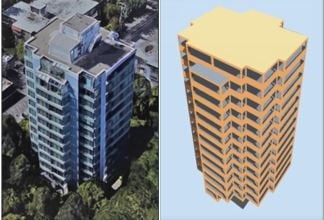This research proposes an alternative rehabilitation strategy for aging high-rise multi-unit residential buildings (MURBs) involving suite compartmentalization and decentralizing the ventilation system.

Energy efficiency retrofits of MURBs today tend to focus on increasing the thermal performance and air-tightness of the enclosure, which neglects the inherent inefficiency and ineffectiveness of pressurized corridor ventilation systems, and often amplifies deficiencies. An alternative approach is to isolate the suites from the corridors, and install balanced heat recovery ventilators in each. Ventilation can then be maintained at design rates, and regulated according to need.
This proposed retrofit was investigated for an existing high-rise MURB in Vancouver. Computer simulation using EnergyPlus™ (v.8.4.0) was used to examine the impact of the proposed retrofit on the case study building. Results show annual heating energy decreased by 51% and overall GHG emissions decreased by 29%. The main benefit of the proposed retrofit, however, is improved zone air distribution of the mechanical ventilation system.
Because building enclosure air-tightness improvements can negatively impact air distribution in buildings with pressurized corridor ventilation systems, the proposed retrofit should be applied in combination with, or before, an enclosure retrofit. Thermal resilience should also improve, with longer passive surviveability durations from a reduction in uncontrolled air leakage induced by stack effect.

